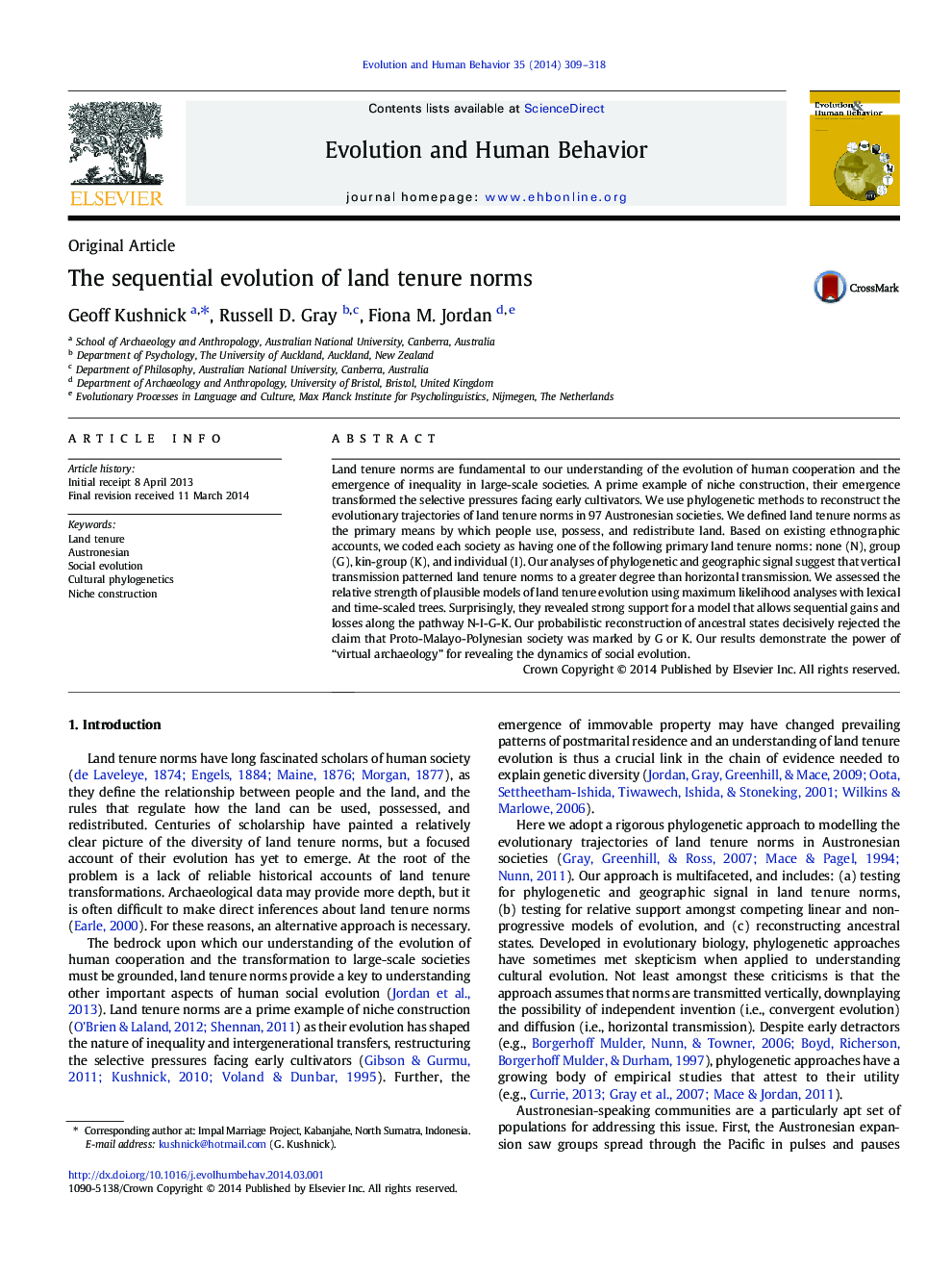| کد مقاله | کد نشریه | سال انتشار | مقاله انگلیسی | نسخه تمام متن |
|---|---|---|---|---|
| 943299 | 925452 | 2014 | 10 صفحه PDF | دانلود رایگان |
Land tenure norms are fundamental to our understanding of the evolution of human cooperation and the emergence of inequality in large-scale societies. A prime example of niche construction, their emergence transformed the selective pressures facing early cultivators. We use phylogenetic methods to reconstruct the evolutionary trajectories of land tenure norms in 97 Austronesian societies. We defined land tenure norms as the primary means by which people use, possess, and redistribute land. Based on existing ethnographic accounts, we coded each society as having one of the following primary land tenure norms: none (N), group (G), kin-group (K), and individual (I). Our analyses of phylogenetic and geographic signal suggest that vertical transmission patterned land tenure norms to a greater degree than horizontal transmission. We assessed the relative strength of plausible models of land tenure evolution using maximum likelihood analyses with lexical and time-scaled trees. Surprisingly, they revealed strong support for a model that allows sequential gains and losses along the pathway N-I-G-K. Our probabilistic reconstruction of ancestral states decisively rejected the claim that Proto-Malayo-Polynesian society was marked by G or K. Our results demonstrate the power of “virtual archaeology” for revealing the dynamics of social evolution.
Journal: Evolution and Human Behavior - Volume 35, Issue 4, July 2014, Pages 309–318
